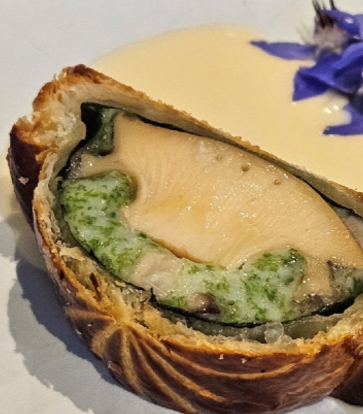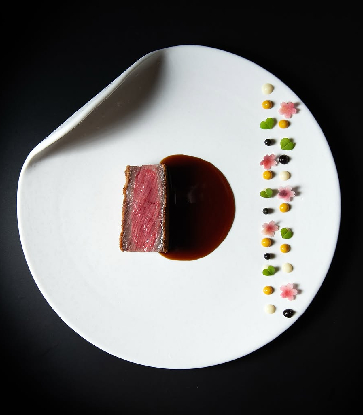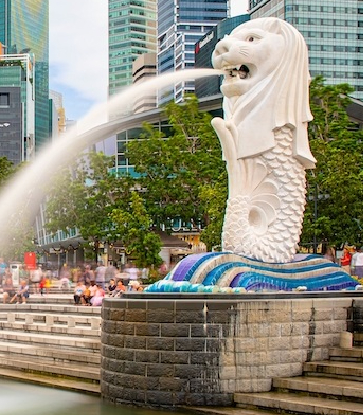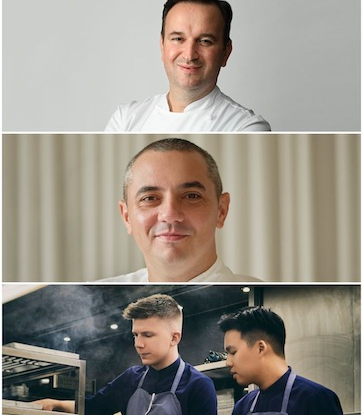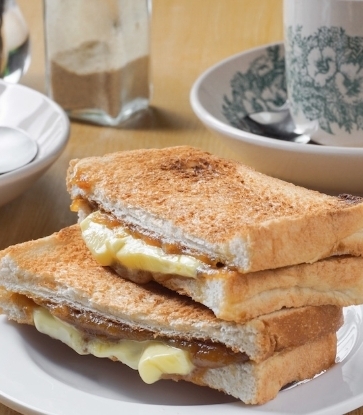As we pay homage to Singapore’s food heritage, it is also equally important to reflect on time-honoured dishes that have been part of the food memories of generations of Singaporeans. However, some of these culinary gems are disappearing due to their cumbersome cooking techniques, long preparation process and mounting costs of the ingredients.
We get five Singapore chefs to share their memories of dishes that are gradually fading from the local food scene.

According to David Yip, chef-owner of Chinese restaurant Circa 1912, this almost- forgotten Cantonese dish counts as one of the classic Chinese banquet dishes. These days, a very good version of the dish can only be found in established restaurants, where the kitchens are manned by very senior Cantonese chefs. He says: “With the need for highly -skilled chefs and further time, effort and cost needed, restaurants are reluctant to prepare this dish.”
The preparation of this dish, is deceptively simple, but can take days. For instance, the cured Jinhua ham has to be rinsed to get rid of excess salt, blanched to remove the exterior dust and fat, and cured in sugar syrup to neutralise the overt saltiness of the meat, before being thinly sliced. He adds that the chicken must be poached, deboned and cut into pieces and arranged like blocks in a game of Domino.
For a more elaborate version of the dish, dried shiitake mushrooms and bamboo shoots are included. All the ingredients are carefully stacked in the form of a kirin, an auspicious animal in Chinese mythology, and steamed for a couple of minutes. The stacking of ingredients adds a layer of auspicious significance. Finally, “mirror starch” or boli qian, which is superior consommé thickened with potato flour, is poured over the dish before it is served.

Most people are familiar with putu mayam (also known as idiyappam or string hoppers) that is served with grated coconut and gula melaka, but not many have heard of its round cousin, putu bola (“putu” is likely derived from a Tamil word for something made of flour and coconut, while “bola” means ball in Malay).
Chef and cooking instructor Devagi Sanmugam says putu bola was a popular Indian snack in the 1950s and 1960s. “Street vendors carried putu mayam packed in rattan baskets lined with a muslin cloth on their heads. When there was leftover dough, it was rolled into balls and became putu bola.”
She adds: “Apparently, Chinese children love these little balls that are eaten with the brown sugar and freshly grated coconut.”
To make putu bola, the rice flour is roasted and steamed to get rid of its raw smell. Hot water and salt is then added to make a thick, soft dough before it is rolled into small balls that are about 2cm to 3cm in diameter.
These days, putu bola is a rare sight as most of the putu mayam is mass-produced and imported from Johor. She adds: “There are no street hawkers selling them so people have forgotten them.” Her favourite putu bola memory was when she was in Primary 1 in 1963. She insisted that her mother buy her putu bola from a street vendor after watching a classmate’s mother feeding her the snack during recess. She adds: “From then on, putu bola were made at home. Sometimes, we served these balls with leftover fish curry from the previous day and they tasted great with curries too.”

3. Carne Picada (Minced Meat Stew)
For Damian D’Silva, executive chef of Singapore heritage restaurant Folklore, one of his favourite childhood dishes is carne picada (minced meat stew). The hearty stew is made with minced beef sweetened by Bombay onions and dark soya sauce, and cooked with potatoes and aromatic spices such as cinnamon, star anise, cloves, nutmeg and peppercorn.
He reminisces: “As a young boy, the dish would be present at least twice a week. Granddad did not think of it as an Eurasian dish. He cooked it because the younger children were drawn to its taste. It was salty, and slightly sweet, but more
importantly, it was very moreish.” He adds that the clever use of spices and Worcestershire sauce gave the dish a very distinct flavour.
D’Silva, who is of Eurasian-Peranakan parentage, says that this dish was a common sight on dining tables in Eurasian households during the 1960s and 1970s as it was a straightforward dish to prepare. The most difficult part, he points out, was dicing the Bombay onions and potatoes.
“This was a dish that we ate especially for lunch after school,” he says. “I guess it was difficult to reject beef and potatoes. It’s kind of like burgers and fries but with gravy.”
These days, he realises that carne picada, which evolved during World War II in Singapore, is hard to come by in Eurasian households. He muses: “Perhaps we have forgotten the hardship our forefathers had to endure. I hope this dish will be remembered and cooked by our children and generations to come.”

One of the stalwart dishes at 55-year-old Chinese restaurant Dragon Phoenix is Chicken Stuffed With Bird’s Nest In Chicken Consomme. Like its name suggests, bird’s nest is stuffed into a whole chicken that has been deboned before the bird is double-boiled with superior chicken stock.
This dish is as old as the restaurant, which was started by Cantonese masterchef Hooi Kok Wai, also known as one of the Four Heavenly Kings of Singapore’s culinary scene in the 1960s and 1970s.
Second-generation chef-owner Chris Hooi says: “This is a classic Cantonese dish that was very popular in wedding banquets during the post-war era in Singapore.” It also helps that this dish is chock-full of wealth and fertility symbols. Chicken is commonly referred as phoenix in Cantonese cuisine.
He says: “This dish boasts a rich and flavourful of a clear soup, and the contrast of smooth textures between the chicken skin and bird’s nest.”
On why this luxurious dish is rarely served in Chinese restaurants these days, Hooi says explains that deft knife skills and a high level of culinary craftsmanship are crucial in deboning an entire chicken without breaking it's skin.
Besides knife skill, controlling the cooking temperature while keeping a close watch on the time is also vital. These two factors are integral in ensuring that the stuffed boneless chicken does not break during the cooking process, which will cause the bird’s nest to spill out.
He adds that the price of bird’s nest has skyrocketed over the years, making this dish too extravagant to be included in standard wedding banquet menus.
5. Pork-filled Hakka Yong Tau Foo
Growing up, Pang Kok Keong, chef-owner of French restaurant and patisserie Antoinette, remembers that Hakka-style yong tau foo pieces came topped or sandwiched with minced pork filling. These days, a blend fish paste and starch is the most common filling in yong tau foo pieces. Pang, who is Hakka, says: “My grandmother and mother mashed bits of salted mei xiang, a cured version of mackerel, with minced pork.”
He says that the old-school Hakka filling is more flavourful, salty and fragrant. He enjoys the pork filling especially when slathered on eggplant, bitter gourd and tofu. They are best served with Hakka noodles, springy noodles slightly thicker mee kia (thin egg noodles) that are tossed in pork lard.
He reveals that one of his favourite haunts for Hakka yong tau foo is at Traditional Hakka Tea Rice at Berseh Food Centre in Jalan Besar. While the long-time stall is famous for another Hakka delicacy lei cha (thunder tea rice), it also offers Hakka yong tau foo with pork-filled morsels.
RELATED: 6 National Day Dining Specials Celebrating Singapore








